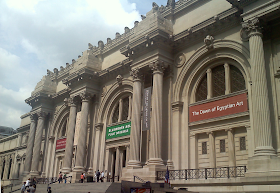The CD opens – appropriately, for a recording of music for brass instruments – with a fanfare, "Toot," one of my most popular works. Then comes my most popular suite, "Italian Postcards," with its musical snapshots of Rome, Venice, and Milan.
More stand-alone works and suites follow, all of which audiences find entertaining and enjoyable. They have also all sold well in print, except for the last two tunes, which are contrasting arrangements ("Fanfarish" and "Lyrical") of the New Year's favorite, "Auld Lang Syne." Everyone seems to celebrate New Year's Eve and New Year's Day, but there is little demand for this song, except at midnight as each new year rolls around. This is the story of how these arrangements came to be.
I used to play in Disneyland's Fanfare Trumpeters during the Christmas season, which at Disneyland lasted from Thanksgiving through the Sunday after New Year's Day. Our job was to play for the Candlelight Ceremony, lead the Christmas parades, and play sets of Christmas carols from Cinderella's Castle and the Main Street Train Station.With six or seven sets to play per day for about twenty-two days, we had to memorize a lot of music.
Many fine trumpeters have been members of the Disneyland Fanfare Trumpeters at one time or another, and some of them have gone on to earn nationwide and international fame. But, that's another story. One of the members was my good friend, Kevin Brown, who has directed the Tournament of Roses Herald Trumpeters for many years. He asked me to write a fanfare based on Auld Lang Syne for his Rose Parade group, and the following year, the Disneyland trumpeters took it up, as well. As the Disneyland Christmas season wears on, day after day after Christmas Day, New Year's Day takes on more and more significance, and my Auld Lang Syne fanfare appealed to both the ensemble and our audiences.
The season after my fanfare became part of the repertoire of the Disneyland Fanfare Trumpeters, I became a member of the group, when Bob Malone (yes, THE Bob Malone) left the ensemble. That year, I think, I offered another arrangement to the ensemble, one that ran counter to the group's typical fare of flashy fanfares culminating in paint-peeling high notes. My tender and harmonically-haunting version of The First Noel quickly became a favorite of the group and our audiences, especially after dark, as couples stopped to listen on the drawbridge, with lights twinkling in the trees of the Main Street hub. A few years later, leader David Washburn asked me to write a second version of Auld Lang Syne in chorale style using jazz harmonies. It, too, became a favorite with audiences, and during my five years in the Disneyland Fanfare Trumpeters, I wrote many arrangements for the group. Every so often, we'd play my arrangements for an entire set, which was very satisfying. A few of these are available in print: click HERE for trumpet quartets and HERE for trumpet nonets.
 | |
|
So, when I was planning the Watercolor Menagerie CD, I decided to make brass quintet versions of those two arrangements of Auld Lang Syne. They give the recording a nice finish. The CD also includes "Sophie's Waltz," a miniature Viennese waltz named for my dog; the sometimes stentorian "Oration," which features trombone; the ever-popular "The Y2K Bug Blues"; the tender "Lullaby" and "Wedding March"; and three sacred works, "Come Unto Me," "Psalm 23," and "Easter Fanfare on Llanfair." The suite, "Love Letters," is always an audience-pleaser, with its three commentaries on relationships, "First Love," "Missing You," and "Dear John." The four-movement suite, "Watercolor Menagerie," – named for pairs of animals – is the most serious concert work on the CD and features some very interesting parts for piccolo trumpet.
The review in the Journal of the International Trumpet Guild says of my CD: "The music is well crafted, programmatic, and contemporary and has a flavor of Hollywood. Of note is Burkhart's fine work on the piccolo trumpet." I think you'll like it, too!
Check out these links (iTunes and CD Baby) to hear clips. It's easy and inexpensive to buy single titles or the entire CD. Why not give it as a Christmas gift for that person you forgot to buy for this year? If you have a brass quintet, you can even purchase the sheet music.
As the old year winds down and the new year approaches, it's the perfect time to listen to the last two selections on my CD, my arrangements of Auld Lang Syne. There's also a version for SATB of the lyrical version. For that sheet music, click HERE.
Happy New Year, everyone!














